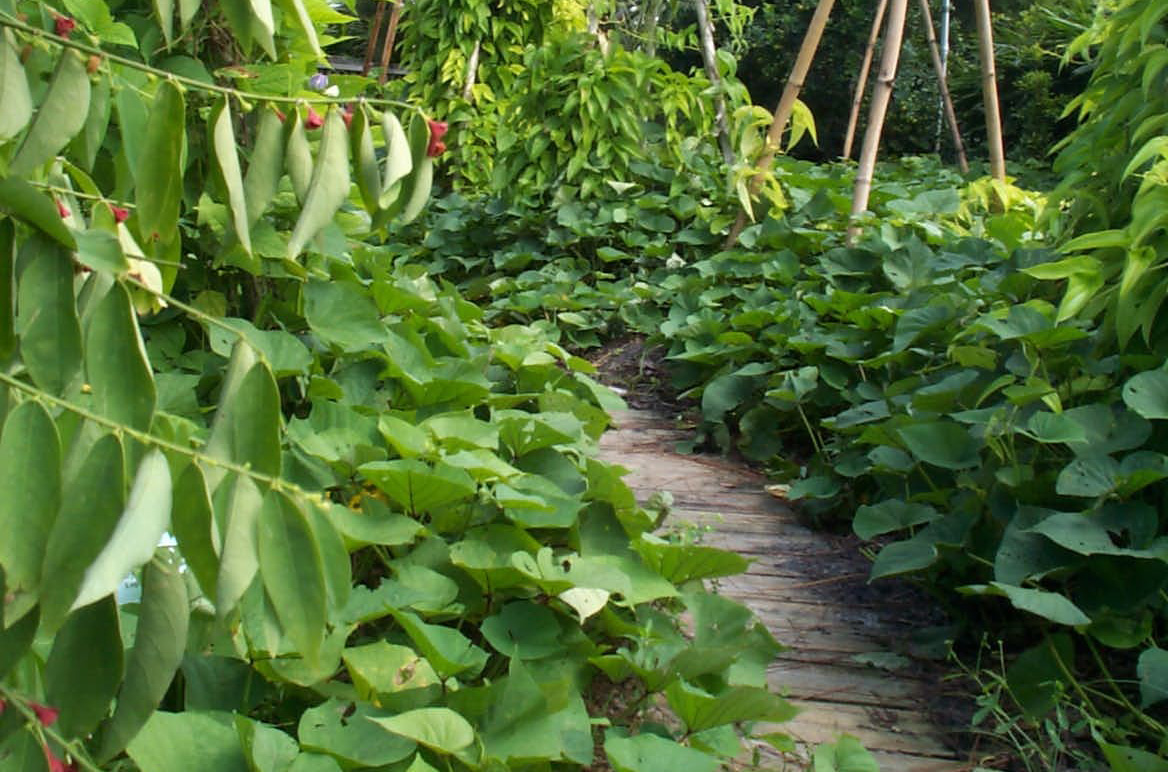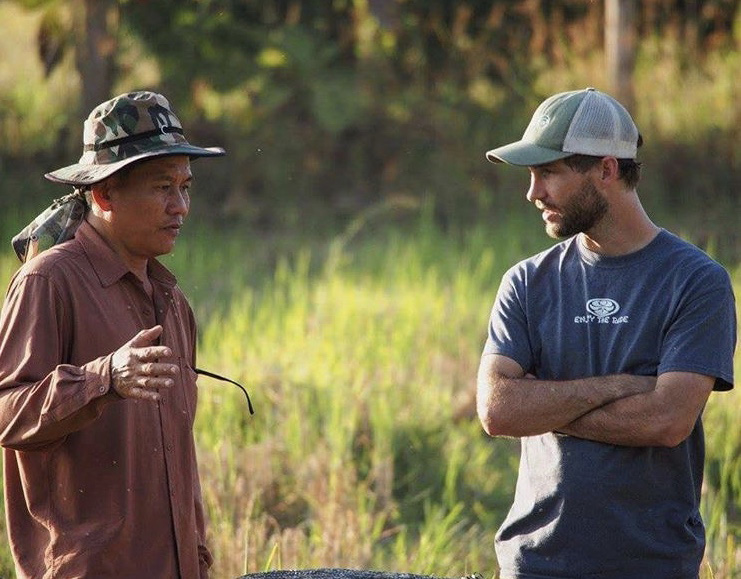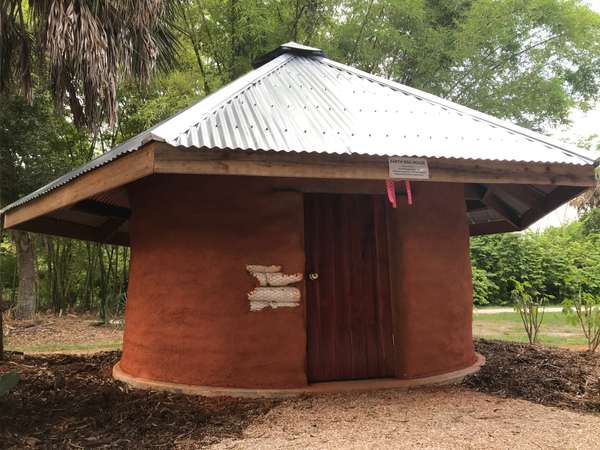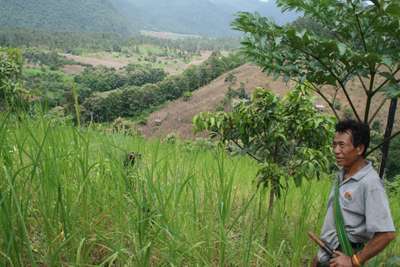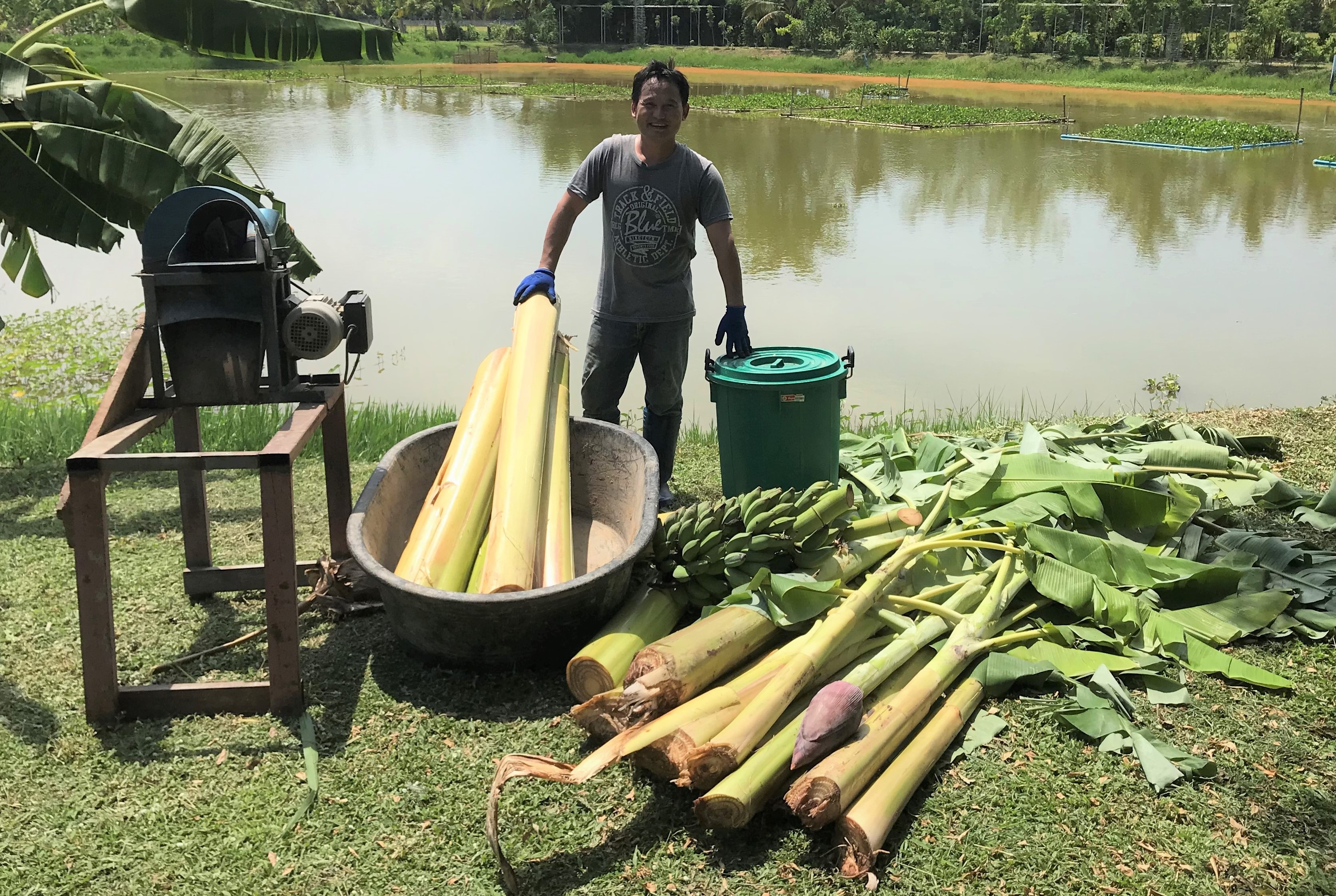Mises à jour de ECHOcommunity
Asia Note #45 Now Available 2021-03-08
EDN Numéro 150 Maintenant disponible 2021-01-20
Sommaire:
- Légumes vivaces et nutrition
- De la Banque de semences de ECHO: Facteurs à prendre en compte lors du choix d'une variété de pois d'Angole
- Échos de notre réseau: Conférence internationale de ECHO sur l'agriculture 2020
- Livres, sites Web et autres ressources: Annonce de l'application mobile d'ECHOcommunity
Légumes vivaces et nutrition
Eric Toensmeier
Extrait:
Nous avons été heureux d'apprendre que les LV ont un excellent potentiel pour remédier aux carences en éléments nutritifs. Sur les 240 LV pour lesquels nous disposions de données, 154 étaient surabondantes (« très élevées » ou « extrêmement élevées ») pour au moins un élément nutritif, et souvent pour plus d'un. En fait, 23 espèces (10 % des LV pour lesquels nous avons trouvé des données) étaient surabondantes dans quatre éléments nutritifs clés ou plus nécessaires pour remédier aux carences ! Nous avons été particulièrement intéressés de constater que les arbres à feuilles comestibles étaient surabondants en plusieurs éléments nutritifs que tout autre type de LV.
Announcing the ECHOcommunity Mobile App 2020-11-19
We are excited to announce the immediate availability of the ECHOcommunity Mobile App! [January, 2021]
This free app has been developed to help you take and share resources when your work extends out beyond your internet connection.
ECHO International Agriculture Conference - ONLINE November 19th! 2020-11-02
The 2020 International Agriculture Conference will feature leading voices in various aspects of agricultural development—practitioners, scientists, and community leaders. Content will be presented in plenary and concurrent breakout sessions, with ample opportunities to network with each other, as past participants have come to know and expect.
EDN Numéro 149 Maintenant disponible 2020-10-16
Sommaire:
- L’atténuation des changements climatiques centrée sur les agriculteurs: Partie 2 sur 2
- Échos de notre réseau: Un rapport d'essai de semences - Comment des semences de ECHO ont poussé dans un jardin de saison sèche en Ouganda
- Echoes from our Network: Greffage du tamarillo et d'autres cultures de solanacées pour une résistance aux nématodes
- Livres, sites Web et autres ressources: Résumé du salon de la TA
L’atténuation des changements climatiques centrée sur les agriculteurs
Tim Motis
Extrait:
La quantité de carbone séquestrée dans les sols par les EVCC dépend, en grande partie, de la quantité de matière végétale cultivée et laissée sur le sol. Vous pouvez calculer approximativement la quantité de carbone contenue dans cette biomasse en collectant et en séchant les feuilles, les tiges et les racines d'une petite parcelle de dimensions connues, par exemple 1 mètre carré... Fujisaki et al. (2018) ont constaté que jusqu'à 36% des apports de carbone étaient convertis en carbone organique du sol. Malgré le fait que tout le carbone des plantes ne se transfère pas au sol (certains retournent dans l'atmosphère, comme expliqué dans la partie 1), les EVCC peuvent toujours augmenter la quantité de carbone stockée dans les sols. Sur un sol sablo-limoneux au Bénin, un système composé du maïs et de la fève de velours (Mucuna pruriens) a ajouté 1,3 tonne métrique de carbone du sol par ha chaque année aux 40 premiers centimètres du sol (Barthès et al., 2004).
Asia Note #43 Now Available! 2020-08-31
Featured in this AN
- Mycorrhizal Fungi - Our Tiny Underground Allies
- Tomato Grafting in Southeast Asia: A Useful Technique for Rainy Season Production
- Recent Asia Note Links
- ECHO Upcoming Events
- Subscribe to ECHO Asia's YouTube Channel
- Ways to stay connected
Une nouvelle Note technique sur les banques de semences en sacs de terre 2020-08-13
Télécharger TN#96 (PDF) Lire TN#96 en ligne
La conservation des semences est un sujet important dans le travail de développement agricole, et ECHO a publié de nombreux articles sur divers aspects des techniques de stockage des semences, des technologies appropriées, et du partage des semences. ECHOcommunity.org héberge diverses ressources liées à la construction avec des sacs de terre, au stockage des semences, et à d'autres sujets connexes. Le dernier ajout à notre répertoire est une Note technique «Earthbag Seed Bank [Banque de semence en sacs de terre]» qui propose une procédure pas à pas dans l’aménagement d'un environnement de stockage de semences résilient pour une banque de semences communautaire.
Outre les informations techniques sur les avantages des structures en sacs de terre, cette Note technique fournit des instructions de construction détaillées, des astuces et des conseils pour la conception de votre propre banque de semences en sacs de terre, ainsi qu'un diaporama en ligne de divers aspects du processus de construction entrepris sur le campus de ECHO en Floride de notre propre structure.
Enfin, la section «Autres lectures» offre une foule de ressources pour déterminer si une banque de semences en sacs de terre est appropriée à vos besoins et à votre contexte. Comme toujours, ECHOcommunity Conversations est un excellent endroit pour discuter avec les autres membres du réseau de toutes les réflexions et questions que vous pourriez avoir sur les banques de semences en sacs de terre, les banques de semences communautaires ou d'autres sujets!
EDN Numéro 148 Maintenant disponible 2020-07-17
Sommaire:
- Atténuation des changements climatiques centrée sur les agriculteurs: Partie 1 sur 2
- Les grillons sont-ils une source pratique de protéines dans les pays tropicaux?
- De la Banque de semences de ECHO: Des variétés de niébé pour la saison chaude et pluvieuse
- Échos de notre réseau: Des jardins d'urgence dans un monde en quarantaine
- Livres, Sites Web et Autres Ressources: La nouvelle image de marque de ECHO, une nouvelle note technique sur les banques de semences en sacs de terre, Restoring the Soil- deuxième édition maintenant disponible sur Amazon.com Inc®
Atténuation des changements climatiques centrée sur les agriculteurs
Tim Motis
Extrait:
ECHO reconnaît les changements climatiques comme une réalité profonde à laquelle sont confrontés les petits agriculteurs. Bon nombre de nos publications visent à aider les agriculteurs à faire face aux défis connexes tels que la chaleur et la sécheresse. Accroître la résilience des agriculteurs et minimiser les risques ont été des éléments clés des pratiques sur lesquelles nous avons écrit au fil des ans. Nous encourageons les stratégies «sans regret», les approches qui assurent une bonne gestion de la terre et une amélioration des moyens de subsistance, que les agriculteurs soient ou non confrontés à des changements climatiques immédiats (Flanagan, 2015). Cependant, nous considérons également les agriculteurs comme ayant un rôle essentiel à jouer dans l'atténuation de certaines des forces motrices des changements climatiques—ce que nous examinons dans cet article, qui est le premier d'une série en deux parties. La partie 1 explore les principes fondamentaux des stratégies que nous présenterons dans la partie 2, dans le prochain numéro d'EDN.
New Technical Note: Earthbag Seed Banks 2020-06-29
Download TN#96 (PDF) Read TN#96 online
Seed storage in the tropics has been a frequent topic of ECHO publications and trainings due to its importance to the smallholder farmer. Access to quality seeds is imperative for agronomic and horticultural crop production. While on-farm seed saving benefits the smallholder farmer, cooperative seed storage through the creation of seed banks bolsters farmers at the community level.
Seed banks provide secure structures for seed storage, while also serving as genetic repositories for important plants in the community. Centralizing the seed saving process also allows for cooperative investment in appropriate technologies and data management. As members of a community learn these management skills, they are empowered to save seeds themselves.
Seed preservation in the tropics is rife with difficulties due to high temperatures and humidity, so investing in worthwhile storage technologies is instrumental in smallholder communities. Of course, the process of establishing a seed bank involves community buy-in, stakeholder cooperation, and resource investment. While the social elements of seed banking are important, thisTechnical Note focuses on earthbag building techniques as a resource-effective means of establishing a seed bank. ECHO has now installed earthbag seed banks at two of its global offices: one in Thailand and one in Florida. This publication will outline the benefits of earthbag seed banks, as well as how to get started with your own project.
Asia Note #42 Now Available! 2020-06-01
Featured in this Asia Note
- Words of Gratitude & Solidarity from the ECHO Asia Director
- Making On-Farm Pig Feed: Farm-Generated Formulas vs. Commercial Feeds
- ECHOs from the Network: Integrated Pest Management on the Island of Bali
- ECHOs from the Network: Coffee Drying ‘Bunk-Beds’ for Vegetable Production
- Recent Asia Note links
- ECHO Asia Upcoming Events
- ECHO Asia Covid-19 Response
- Call for Articles & Insights

